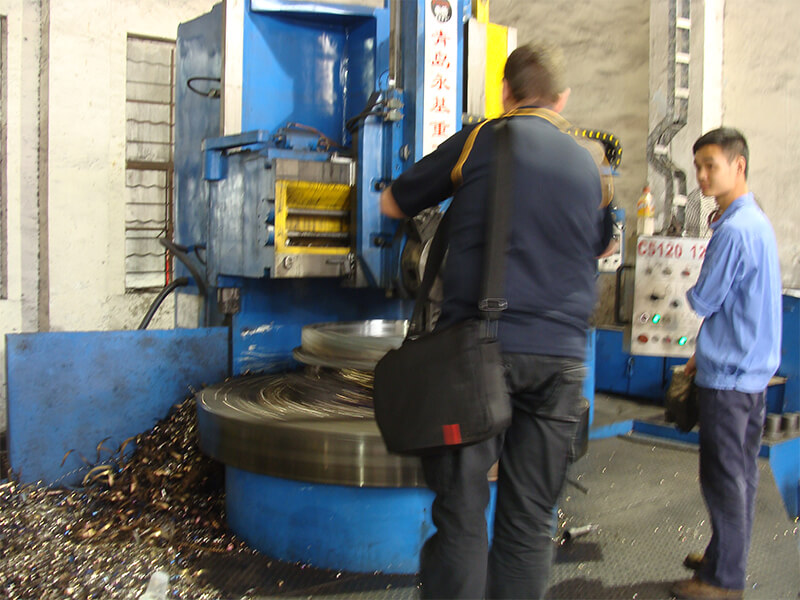نومبر . 24, 2024 23:22 Back to list
Innovations and Applications in Steel Casting Technology for Modern Industries
The Role and Advantages of Steel Castings in Modern Manufacturing
Steel castings play a vital role in modern manufacturing, offering versatility, strength, and durability to a wide range of applications. By employing the casting process, manufacturers produce complex shapes that would be difficult or impossible to achieve with traditional machining methods. This article explores the nature of steel castings, their advantages, applications, and the future of steel casting technology.
Steel castings are metal products created by pouring molten steel into a mold, allowing it to cool and solidify into the desired shape. The process typically involves several steps pattern making, molding, pouring, cooling, and finishing. The materials used for steel casting often include carbon steel, alloy steel, and stainless steel, each selected based on specific applications and performance requirements.
One of the primary advantages of steel castings is their strength and durability. Steel is renowned for its ability to withstand high levels of stress, making it an ideal choice for heavy-duty applications. Structures made from steel castings can endure extreme temperatures, corrosive environments, and mechanical wear and tear. This robustness contributes to the longevity and reliability of components, minimizing the need for frequent replacements and maintenance.
The complexity of shapes achievable through casting is another significant benefit. Steel castings can embody intricate designs and features, including complex geometries and internal cavities. This flexibility not only allows for innovative product designs but also reduces the number of parts needed for assembly, streamlining the manufacturing process. As a result, industries can produce lighter, more efficient products without sacrificing strength.
steel castings

Steel castings are widely utilized across various sectors, including automotive, aerospace, energy, and construction. In the automotive industry, for instance, cast steel components such as engine blocks, transmission cases, and suspension systems are crucial to vehicle performance and safety. The aerospace sector also relies on steel castings for critical components in aircraft engines and structural elements, where reliability is paramount. Meanwhile, in construction, steel castings are used in flood control systems, lifting equipment, and architectural structures, showcasing their versatility.
One pertinent aspect of steel casting is its cost-effectiveness. Although the initial setup for casting can be more expensive due to the need for molds and patterns, the ability to produce large quantities and the reduced material waste often result in lower overall costs. Additionally, the economies of scale achieved through mass production further enhance the affordability of steel castings.
As the manufacturing landscape evolves, the future of steel castings looks promising, bolstered by advancements in technology. Innovations such as 3D printing and computer-aided design (CAD) are revolutionizing the casting process. 3D printing allows for rapid prototyping and the creation of complex shapes without the need for traditional molds, while CAD software improves precision and design capabilities.
Moreover, environmental considerations are driving improvements in the steel casting industry. Manufacturers are increasingly focused on sustainable practices, such as using recycled materials and energy-efficient production processes. This shift towards sustainability not only addresses ecological concerns but also aligns with the growing consumer preference for environmentally responsible products.
In summary, steel castings are invaluable to modern manufacturing, combining strength, versatility, and cost-effectiveness. Their ability to produce complex shapes makes them ideal for a multitude of industries, from automotive to aerospace to construction. As technology continues to advance, the future of steel castings is set to be characterized by greater efficiency, sustainability, and innovation. This makes steel castings not only a mainstay in current manufacturing practices but also an exciting avenue for future developments in materials science and engineering.
-
OEM Cast Silicon Aluminum Alloy Heat Exchanger | Custom & High Performance
NewsAug.25,2025
-
Centrifugally Cast Iron Water Main Pipe | Ductile Iron Solutions
NewsAug.24,2025
-
Durable Cast Steel Concrete Pipe Mold Bottom Rings & Base Trays
NewsAug.23,2025
-
Centrifugally Cast Iron Water Main Pipe for Reliable Mains
NewsAug.22,2025
-
Durable Centrifugally Cast Iron Water Main Pipe
NewsAug.11,2025
-
Centrifugally Cast Iron Water Main Pipes for Reliability
NewsAug.10,2025


